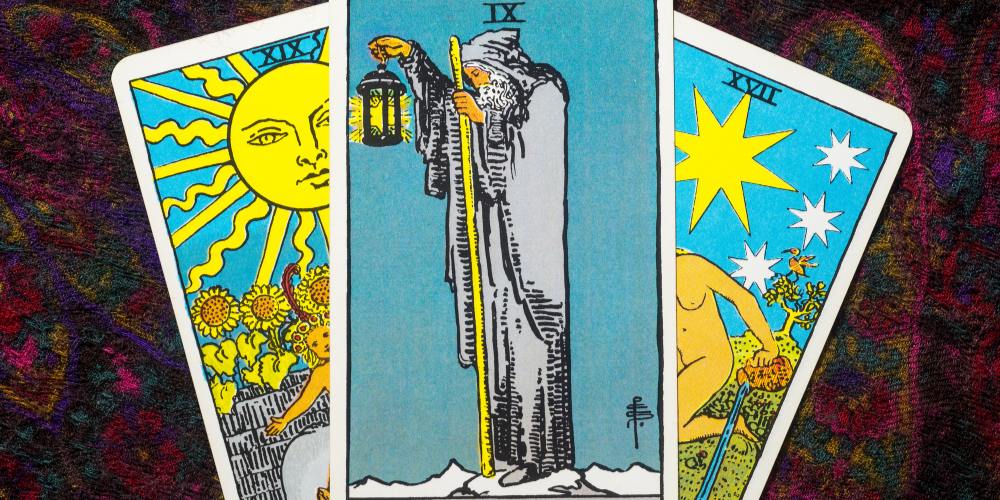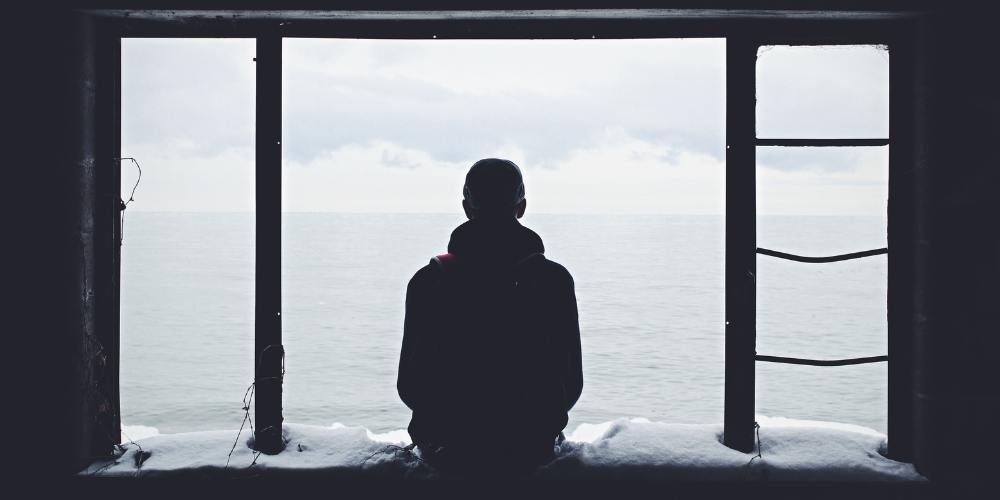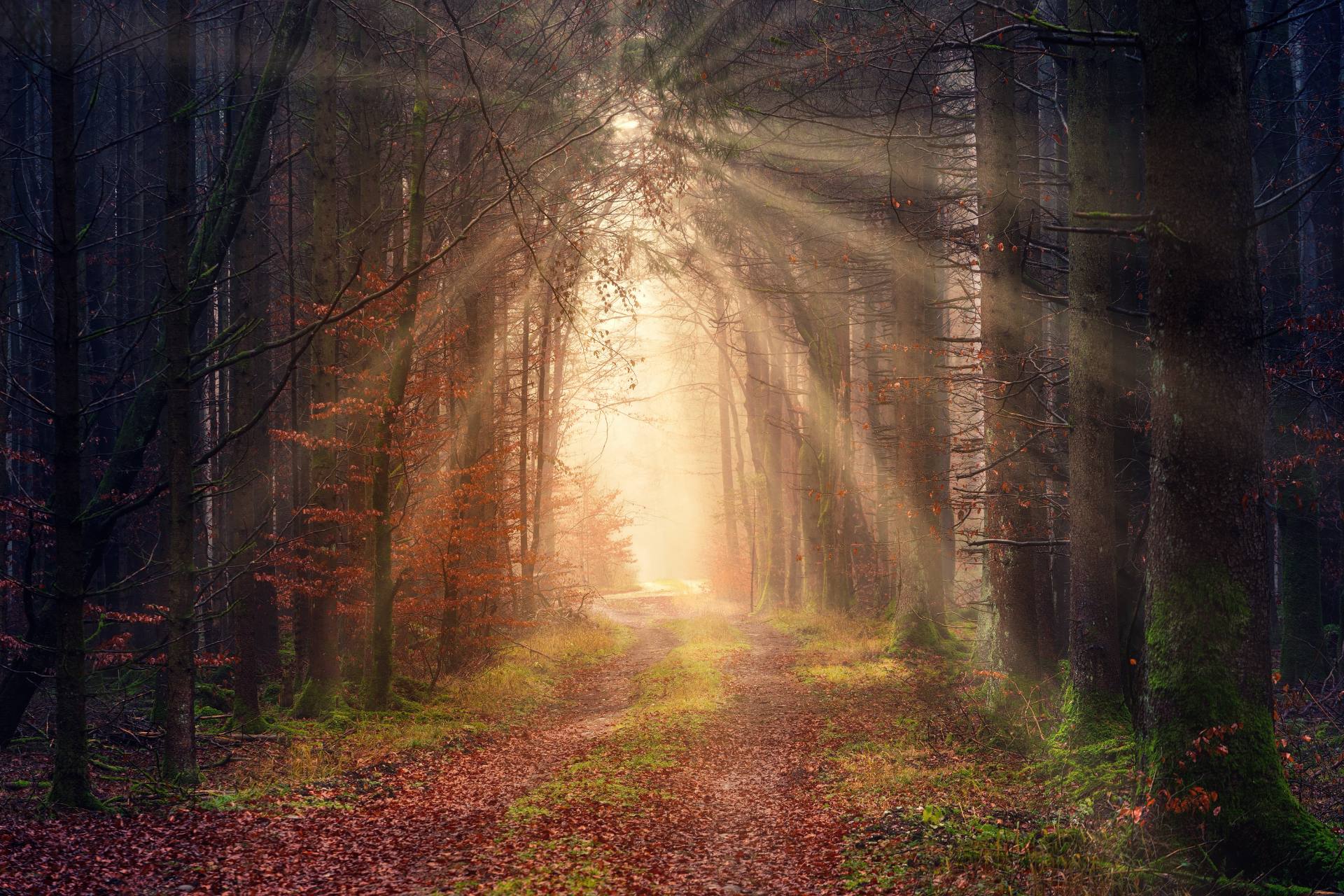In the journey of spiritual awakening, there comes a phase that is both profound and transformative – the Hermit Phase.
It’s a time of sacred pilgrimage, a journey of self-discovery and inner transformation. When we must surrender to solitude, and the noise of the external world must fade into the background to reveal the whispers of our inner self.
This withdrawal isn’t an act of escapism; rather, it’s a journey inward to confront wounds and fears, unravel beliefs, and discover the wisdom within us. It’s a period of introspection, reflection, and profound growth.
What is a spiritual awakening?
The term “spiritual awakening” refers to moving the focus of our awareness from identifying with our ego-self, to a higher perspective. We awaken from this limited sense of self to include our higher self, which has a more expansive, limitless perspective of who we are, and our connection to all that is.
Traditionally referred to as spiritual awakening, because one awakens from the dream of separation created by the egoic mind. We realize – often quite suddenly – that our sense of self, which has been formed and constructed out of our ideas, beliefs, and images, is not really who we are.
Adyashanti, The End of Your World: Uncensored Straight Talk on the Nature of Enlightenment
This shift in perspective is commonly referred to as “raising our consciousness.”
As we raise our consciousness, we are undergoing a complete inner transformation, an upgrade to our original blueprint. Many layers of conditioning, emotional wounds and subconscious programming are revealed and healed, before reintegrating this new awareness into our consciousness.
We can begin to live in the present moment, experience more inner peace, and realise our intrinsic oneness with reality when we awaken from our rigid attachment with who we think we are and how life should be.
For many people, the first indication of a spiritual awakening is that they suddenly become aware of their thoughts. They become a witness to their thoughts, so to speak. They are not completely identified with their mind anymore and so they begin to sense that there is a depth to them that they had never known before.
Eckhart Tolle
Deepak Chopra explains that awakening occurs when we stop viewing life through the lens of our ego and dwelling on the past and the future – the dream world. Instead, we have a simultaneous sense of both our unique individuality, and our oneness to everything else that exists.
Using the popular metaphor to illustrate this point: you are both the wave and the ocean. Your ability to maintain this dual perspective of separation and connection however, depends on your level of spiritual evolution.
Ego death – an experience of shifting perspective
Learning to transcend our ego is essential for spiritual awakening and is often referred to as “ego death.” This term can lead to a lot of misunderstandings about what the ego is. We are not vilifying the ego in order to kill a part of ourselves, but rather exposing the deep illusion that the ego is a thing that we identify with and then claim to be who we are.
Adyashanti explains that the ego is a perspective that arises from the accumulation of experiences in the human psyche (our conditioned identity). In reality, it is not a stable entity, but we presume that it is because we identify with the ego and say, “I am that.”
Ego-death is shifting away from this learned identity and toward a broader, more holistic perspective that goes beyond the conditioned ego-identity. As Adyashanti so eloquently puts it, ego-death is a “transition experience” in which we transcend from ego-self consciousness (conditioned) to higher-self or unity consciousness (unconditioned).
However, because we are dissolving so much of what we unconsciously identified as ‘our self,’ the shift away from this paradigm in our psyche – our worldview, beliefs, truths and so on – feels like a form of ‘death’ to the ego-identity that has dominated our perspective for all of our lives.
This transition may be experienced quite dramatically for some, yet in its essence it is simply a shift of perspective from one to the other.
What causes a spiritual awakening?
There are numerous life catalysts that can lead to spiritual awakening. It may occur as a result of a life transition such as turning a new decade in age, or a traumatic event in our personal lives, such as illness, bereavement, divorce, or financial loss. Alternatively, as a result of global events such as a pandemic or war.
Don’t be misled by stories about people having spontaneous awakenings and peak experiences as a result of ayahuasca or Kundalini awakenings, for example. Although we may experience a powerful ‘blowing open’ of the mind that allows us to catch a glimpse of a bigger reality beyond ourselves, these peak experiences are rarely sustained in the mind-body-spirit complex without the corresponding inner work.
After a peak experience, there is often a significant destabilisation effect in the mind because the mind is unable to fully integrate the experience quickly. A natural spiritual awakening is primarily a gradual and multi-layered process in which we must heal, integrate, and rebalance ourselves on all levels of our being.

What is the Hermit Phase of spiritual awakening?
There is no escape, and there is no where to turn but within.
The journey of spiritual awakening is a profound experience and like many before me, I’ve had to find a language to describe an inner spiritual experience that is, quite honestly, subjective and indescribable.
It’s an experience that leads us through various stages of self-discovery, growth, and transformation, that can be portrayed by the Fool’s Journey – the archetypal imagery and meaning found in tarot cards – each representing different facets of the soul’s journey through life. In Jungian psychology, the archetypes represent universal patterns and images that are part of the collective unconscious.
The Tower, the Hermit, and the Fool are all tarot archetypes that I found perfectly represented three phases of spiritual awakening:
- The Tower – the initiation of awakening triggered by the dissolution of our external life
- The Hermit – dark night of the soul, the subsequent isolation and introspection phase
- The Fool – new beginnings, a phase of integration and reorientation of our new level of consciousness
It was stored with pain; it’s going to release with pain.
Michael A. Singer
We are learning to detach from our minds and its disturbances through this introspection. We’re uncovering unloved and suppressed aspects of ourselves that are rooted in fear, trauma and dysfunction. We want these wounded parts to emerge from the shadows and into the light of our higher consciousness, freeing us from their energetic burden.
Depending on your life experiences, this can be a very difficult process of healing to the ego-self. Our entire lives have been spent avoiding this inner cleansing. Because it is concerned with our safety, our ego-self prefers to keep these vulnerable parts of ourselves hidden and out of sight.
And since it is oriented toward the external world, it is blind to, and sceptical of, this new higher awareness that we are trying to bring to the forefront. As a result, it fights back to retain its control with an astonishing force.
This is the source of our resistance to inner work and healing.
Key themes of The Hermit Phase include:
- The ego-personality learning to let go, trust and surrender to your higher self.
- Surrendering to solitude and introspection to deepen self-awareness.
- Accepting the wounds that are coming into the light.
- Embracing the wisdom of solitude and inner guidance.
- Reconnecting with one’s inner truth and authenticity.
- Letting go of societal expectations and external validation.
- Cultivating a sense of self-acceptance, inner peace and contentment with what has been.
What were the challenges of my Hermit phase?
Even though I’m a lifelong spiritual seeker, when my life broke down and I was compelled to go through the awakening process, I felt 100% resistance to it. I just wanted my life to return to ‘normal’ and the suffering to end.
In truth, the growing resistance came in response from a knowing within me that Life itself was wanting this. I believe true awakening happens when an inner force within you is wanting to wake you up out of the illusion of separation, fear and limitation – the domain of the ego-self.
For most of us, the path to enlightenment is not rosy. We need to acknowledge this, because otherwise we’re only going to let ourselves travel toward that which feels good, that which supports our image of what the path of awakening should be.
Adyashanti, The End of Your World: Uncensored Straight Talk on the Nature of Enlightenment
Whereas the Tower Phase was full of unexpected shocks and drama, the Hermit Phase slammed the brakes on my life.
I sensed a strong energetic force that seemed to be blocking forward movement in my external life. I would be out of work for months at a time, and with limited funds, I was forced to stay at home without the usual distractions.
Even though I knew I was upgrading on the inside, my personality-self found it extremely difficult and frustrating because my external life had come to a halt, and I felt like I was stagnating. Everyone else seemed to be living their lives, but mine had collapsed.
Worse, no matter how hard I tried to fix things, to make things happen, all my strategies came to nothing. The dissolution of my old life and sense of identity had a very destabilising effect; I lost all sense of personality-level desires and even a sense of a future.
You have to grow from the inside out. None can teach you, none can make you spiritual. There is no other teacher but your own Soul.
Swami Vivekananda
To my ego-self, it felt like my world was coming to an end, what is referred to as the “death of the ego.” It triggered the darkest spiritual depression, existential despair, and disconnection I’ve ever felt.

Much of my Hermit phase was marked by deep and painful inner work: becoming aware of emotional wounds, limiting beliefs and behaviours, and then working to release them.
Even with my spiritual toolbox and spiritual awareness, these were heavy energies to process and at times I really feared for my mental, emotional and physical wellbeing. I sometimes think it was only the light within me, my Higher Self and my personal courage that got me through this dark night of the Soul.
There is still your whole human structure – your body, your mind, and your personality. Awakening can often be experienced as very disorienting to this human structure.
Adyashanti, The End of Your World: Uncensored Straight Talk on the Nature of Enlightenment
We frequently overlook the fact that changing our internal framework can have a significant impact on our physical body. The cycle of purging and releasing stuck energies left me exhausted. I needed to take time to rest my mind and body, allowing my energy to recharge and the new insights to sink in.
Even when I ventured back into the external world, whether working or socialising, the Hermit psyche persisted in me. I’d feel uneasy, hyper-aware, and sensitive to the energy of the environment and the people around me. I could feel drained and lethargic all of a sudden, desperate to return to the safety of my cave.
Strategies for overcoming challenges in the Hermit phase
The Hermit Phase, characterised by solitude, introspection, and inner exploration, can be particularly intense, as we grapple with feelings of isolation, disconnection, and existential questioning. Navigating the challenges of this phase requires courage, resilience, and a willingness to delve deep into the depths of your being.
1. Embrace solitude as sacred space:
During the Hermit Phase, solitude becomes a sanctuary for self-reflection and inner transformation. Rather than resisting feelings of isolation, view solitude as an opportunity to cultivate a deeper connection with yourself. Create a sacred space for solitude where you can retreat and engage in inner work and connect with your wisdom. Engage in activities that nourish your soul, such as journaling, meditation, or spending time in nature.
2. Foster connection with others:
While solitude is essential for introspection, prolonged isolation can exacerbate feelings of loneliness and disconnection. Seek out opportunities to connect with like-minded individuals who understand and support your spiritual journey. Join online communities, attend spiritual gatherings or workshops, and engage in meaningful conversations with friends and loved ones, if possible. Remember that you are not alone on this path, and opening up and sharing your experiences can provide invaluable support and encouragement to you, and others.
3. Cultivate self-compassion:
The Hermit Phase can bring up intense emotions such as self-blame and victimhood, self-doubt, and fear. Practice self-compassion by treating yourself with kindness and understanding during difficult times. Acknowledge and validate your feelings without judgment, recognising that they are a natural part of the journey. Offer yourself words of encouragement and reassurance, reminding yourself that you are worthy of love and acceptance exactly as you are.
4. Release heavy energies through movement:
Introspection and self-exploration can sometimes lead to feelings of heaviness or stagnation in the body and mind. Release stagnant energies through movement practices such as yoga, qigong, or dance. These practices not only help to release tension and stress but also facilitate the flow of energy throughout the body, promoting a sense of lightness and clarity. Allow yourself to move intuitively, letting your body guide you in releasing any pent-up emotions or energy blockages.
5. Rediscover meaning and purpose:
The Hermit Phase often brings with it a sense of existential questioning and a loss of meaning. Take this opportunity to reconnect with your values, passions, and sense of purpose. Engage in activities that bring you joy and fulfillment, whether it’s pursuing a creative hobby, volunteering for a cause you believe in, or simply spending time in nature. Reflect on what truly matters to you and how you can align your life with your deepest values and aspirations.
6. Seek support from spiritual practices:
During times of despair or uncertainty, turn to spiritual practices that nourish your soul and uplift your spirit. Engage in prayer, meditation, or mindfulness practices that help you connect with a higher power or source of divine wisdom. Draw strength from spiritual teachings and wisdom traditions that resonate with you, finding comfort in the knowledge that you are part of something greater than yourself. Of course, seek professional help if you need it.
Remember that the challenges you face during the Hermit Phase are an integral part of your growth and evolution, leading you closer to a deeper understanding of yourself and the world around you.
What happened after the Hermit phase ended?
The Hermit Phase is not meant to last forever. Like the caterpillar in its cocoon, there comes a time when the soul must emerge from its solitude, transformed and renewed.
Yet my transition out of the Hermit’s cave into The Fool phase of awakening has been gradual, several years in fact. Within my expanded awareness, I’ve been establishing a new equilibrium and a new sense of self. I’ve begun to put frameworks in place in my life that better reflect this updated version of myself, but it’s a slow process.
Energetically, moving forward feels like climbing a ladder. There’s a point when I’m stable but have to lift one foot to move up a rung. I sometimes feel stuck between rungs as I try to balance the opposing energies of the New Me and the Old Me.

Recalibrating
The spiritual process isn’t any different before awakening than afterward. It’s just that, after awakening, the process is happening from a different perspective; you may think of it as a bird’s-eye view versus a ground-level view.
Adyashanti, The End of Your World: Uncensored Straight Talk on the Nature of Enlightenment
Like muscle memory, stubborn limiting beliefs and inner dialogue frequently kick in automatically. So it’s important to maintain a high level of self-awareness. However, I’m able to carry out any introspective work with considerably less resistance and more ease. In fact, I enjoy it because I look forward to the rewards of insight, lightness and flow.
While I don’t feel the physical and mental exhaustion that characterised my Hermit phase, I do sense that there is still a lot of mental, emotional, and physical rebalancing going on in my mind-body-spirit complex, which can be frustrating for my ego-self, which is still looking for a destination point that signifies this is all over.
I allow my thoughts and emotions to flow more freely without getting too caught up in any ego-mind narrative or resistance. If I’m tired, I’ll take a nap or curl up with a good book. I honour my energy, self-care, and resting much more these days.
Reintegration
I’ve had to come down from the spiritual dimensions and my inner landscape where I spent so much time in order to ground the “New Me” and my new downloads, ideas, and ways of thinking.
Returning to the “3D matrix” has been difficult because my ego-mind, which is rooted in the real world, fights to reclaim power from my higher self. However, I can sense a deeper level of alignment and trust from my ego-personality towards my higher self (which is a miracle in and of itself).
To accommodate all of these shifts, I’ve developed new daily practises and interests. I’m more focused than ever on my inner world and tuning into my own guidance. I’m more interested in discovering the essence, purpose, and expression of my soul. I’m becoming more aligned to my soul-goals and gifts.
Hermitting gifts
It’s clear that my inner work is paying off; I feel more self-acceptance and understanding of myself and the human condition. I feel integrated with my higher self, I’m more at ease with life, more emotionally stable and grounded, with less anxiety and fear. I have a stronger intuition, faith in my higher self, and a more consistent high vibration.
We are human beings, not human doings; I’ve learned the hard way that I can’t control life from sheer force of will, pushing through with action alone. I am less reactive and take responsibility for my own responses, behaviour and mindset. It’s now transparent to me how many of my defensive behaviours, unconscious actions and auto-thinking had actually been perpetuating the ‘problems’ in my life.
I’m less impatient and more at ease with the natural flow of energies inside and outside of me, sensing when to stay still and when to take inner-spired action. That the next step is not always the logical one, the one the mind thinks it is.
I feel a deep sense of communion with all of nature, with humanity, and treasure my life on this Earth. I know now, that if I hadn’t been forced to withdraw from the external movie of my life, my ego-self would never have allowed the time or space to connect so deeply within.
by Anjla



